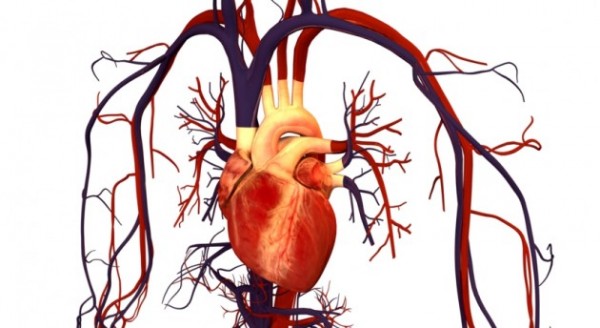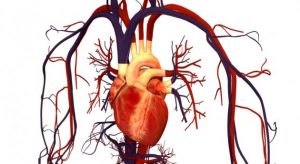
Congenital heart disease – causes, side effects and treatments at NaturalPedia.com
Wednesday, February 21, 2018 by Zoey Sky
http://www.naturalpedia.com/congenital-heart-disease-causes-side-effects-and-treatments-at-naturalpedia-com.html

A congenital heart defect (CHD) is a birth defect that involves a problem with the structure of the heart. CHDs are the most common type of birth defect.
CHDs may involve the walls and valves of the heart, and the arteries and veins near the heart. The defects can disrupt the normal flow of blood through the heart. CHDS can cause blood flow to slow down. An child with a defect can also experience blood flow to the wrong part of the body, and blood flow may be completely blocked.

Known symptoms of a congenital heart disease
Sides effects of CHDs may depend on the type and severity of the particular defect. Some defects can have few or no symptoms. Others might cause the following symptoms:
- Blue-tinted nails or lips
- Fast or troubled breathing
- Tiredness when feeding
- Sleepiness
Anyone can give birth to a child with a congenital heart defect. At least eight out of 1,000 babies could have a form of congenital heart disease, but most of them may be mild. If an individual or their family members have already had a baby with a heart defect, the risk of having a baby with a defect may be higher.
Body systems harmed by a congenital heart disease
Congenital heart defects are malformations present at birth. CHDs may or may not have a disruptive effect on an individual’s circulatory system.
A congenital heart defect can increase the risk of developing certain medical conditions such as:
- Anticoagulation
- Arrhythmias
- Congestive Heart Failure
- Infective Endocarditis
- Pulmonary Hypertension
Food items or nutrients that may prevent a congenital heart disease
The following foods can help prevent a congenital heart disease:
- Bran – Bran cereal is full of fiber, and it can help you control your cholesterol level. Other sources of fiber include barley, oats, whole grains (like as brown rice and lentils), and beans (like kidney beans and black beans).
- Broccoli – Broccoli is rich in calcium.
- Chicken – Chicken contains vitamin B6, a nutrient that helps maintain heart health.
- Garlic – Garlic is rich in antioxidants. This vegetable can help minimize plaque buildup, reduce the occurrence of chest pain, and it can help keep the heart healthy overall.
- Olive oil – A source of monounsaturated fat, you can use olive oil when sauteing vegetables.
- Pecans – Full of magnesium, pecans are another heart-friendly food.
- Whole-wheat bread – Whole-wheat bread contains selenium, an antioxidant mineral that works with vitamin E to protect the heart.
Treatment and management options for a congenital heart disease
Treatment for CHDs depends on the type and severity of the defect. There are affected infants and children who might require one or more surgeries to repair the heart or blood vessels, while others may be treated without surgery through cardiac catheterization.
This procedure involves the use of a catheter, which is a long tube. The catheter is threaded through the blood vessels into the heart and a doctor will “take measurements and pictures, do tests, or repair the problem.”
Cardiac catheterization will not always fully address the heart defect, but it can significantly improve blood flow and how the heart works.
Where to learn more
- Exposure to solvent chemicals in the workplace increases birth defect risk in children
- Garlic is natural medicine for treating high blood pressure
- Healthy sleep habits reduce the risk of dementia among older people
- Pregnant Women and Strokes
- Scientists Make the World’s First Discovery on the Cause of Many Types of Birth Defects
Summary
A congenital heart defect (CHD) is a birth defect that involves a problem with the structure of the heart. CHDs are the most common type of birth defect.
Sides effects of CHDs may depend on the type and severity of the particular defect. Some defects can have few or no symptoms. Others might cause symptoms like blue-tinted nails or lips, fast or troubled breathing, tiredness when feeding, and sleepiness.
Congenital heart defects are malformations present at birth. CHDs may or may not have a disruptive effect on an individual’s circulatory system.
The following foods can help prevent a congenital heart disease: bran, broccoli, chicken, garlic, olive oil, pecans, and whole-wheat bread.
Treatment for CHDs depends on the type and severity of the defect. There are affected infants and children who might require one or more surgeries to repair the heart or blood vessels, while others may be treated without surgery through cardiac catheterization.
Sources include
Tagged Under: Tags: congenital heart disease





